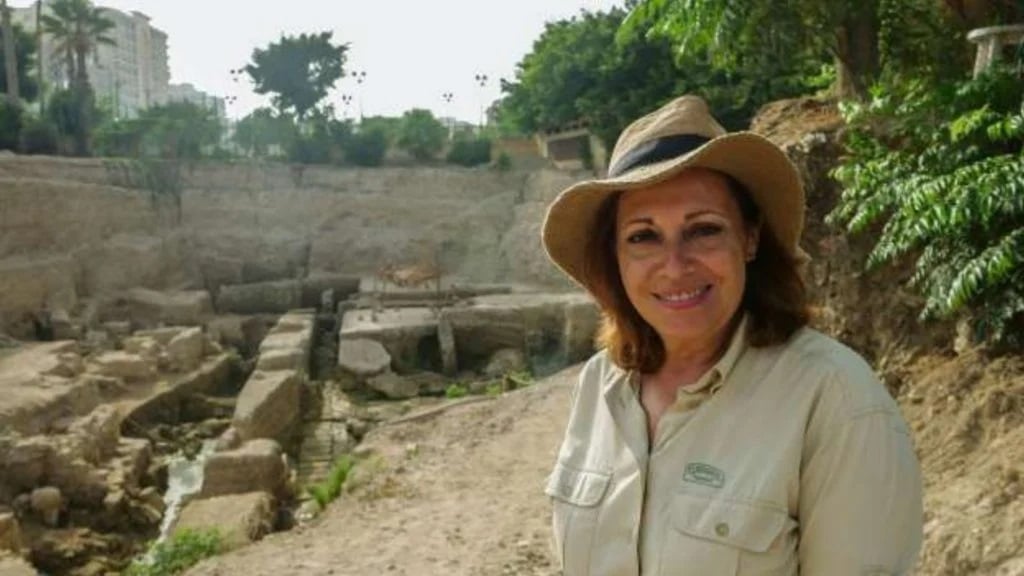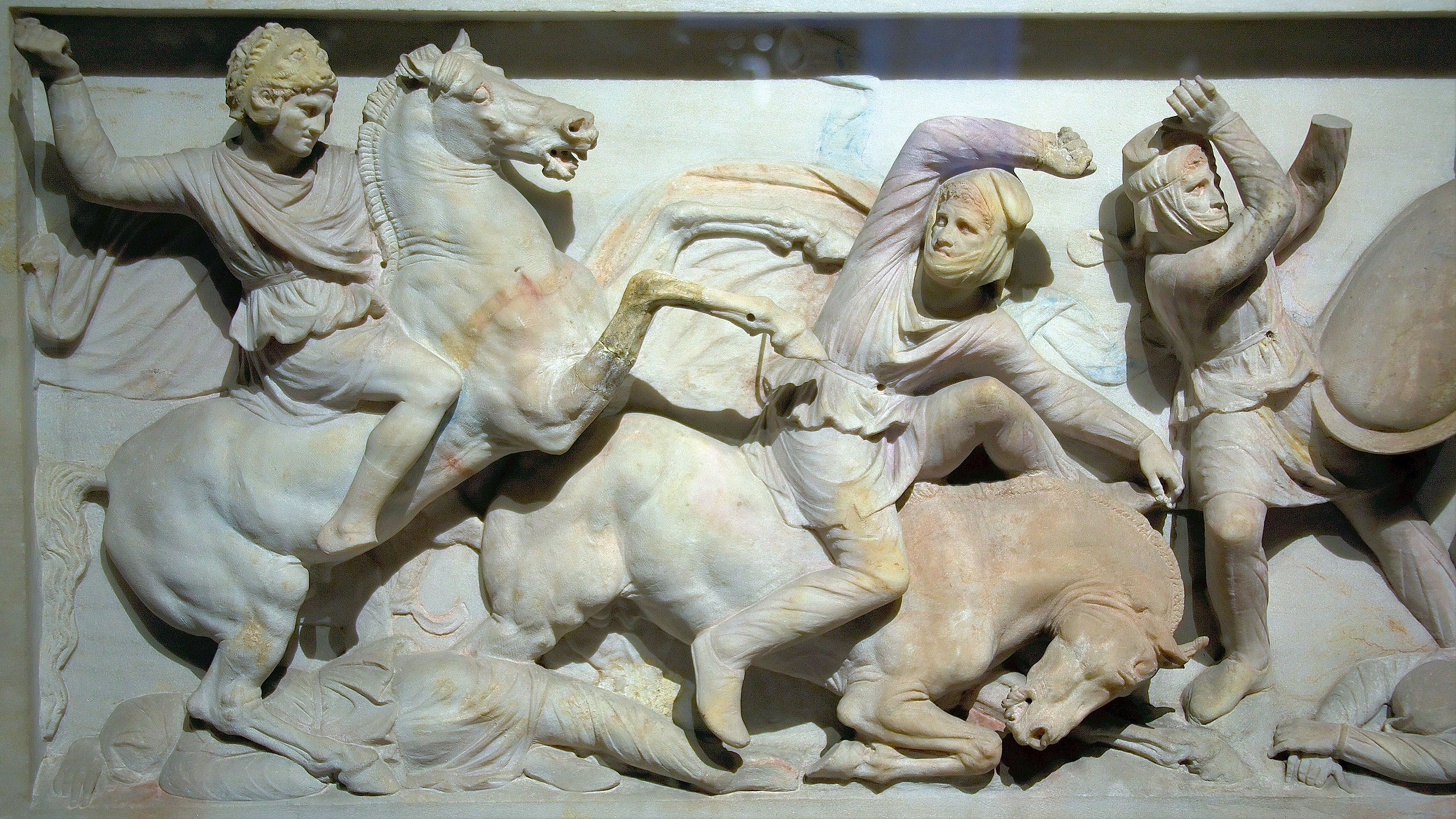
For over fifteen long years, Greek archaeologist Calliope Limneos-Papakosta has been searching for the Golden Fleece of Greece’s ancient history, namely, the priceless tomb of Alexander the Great.
For all these years, she and her team have dug tirelessly in the Shallalat Gardens in Alexandria, Egypt, the city named after the great conqueror.
Battling water which constantly floods the dig, she and her colleagues have dug through layer upon layer of Alexandrian history.
Now, they have reached down to the bedrock of Alexandria, locating the first roads built in the city, as well as the foundation of an enormous public building over two hundred feet long, which she has yet to fully uncover.
Historical records indicated that after his death in Babylon, Alexander the Great‘s body was mummified and buried in Egypt, specifically at the temple of Zeus Ammon in the Siwah Oasis.
That was the great general’s wish. This is why archaeologists have been searching for his tomb in Egypt and Alexandria in particular.
After years of digging and discovering ancient historical artifacts without any indication of Alexander’s tomb, the Greek archaeologist was ready to quit in 2018.
As if by magic, however, a pristine white marble hand was suddenly unearthed, reviving her hopes. It was as if the buried statue the hand belonged to wanted to tell her that she had to continue on with her mission.
As Papakosta said on Greek television in May of 2018, “For fourteen years, we searched without results. I was so tired and one day I said ‘That’s it, I quit.’ Just one hour before our departure, after we had stopped the excavation, the soil retreated on one side and a hand appeared…I felt awe. ‘My Alexandros’ reveals himself to me.”
The mystery over Alexander the Great’s tomb

Alexander had requested to be referred to as the “Son of Zeus Ammon” and did not wish to be buried alongside his father Philip at Aegae.
According to early historians, when Alexander died suddenly in 323 BC in Babylon, his body was mummified, like the Pharaoh he was, and placed in a gold coffin to be taken to Siwa.
However, his wish was not honored. The funerary cart with Alexander’s body was hijacked in Syria by one of his generals, Ptolemy I Soter.
In late 322 or early 321 BC, Ptolemy diverted the body to Egypt, where it was interred in Memphis, which had been the center of Alexander’s government in Egypt.
While Ptolemy was in possession of the great conqueror’s body, his generals, Perdiccas and Eumenes, had Alexander’s armor, diadem, and royal scepter in their possession.
In the late fourth or early third century BC, Alexander’s body was transferred from the Memphis tomb to Alexandria for reburial by Ptolemy Philadelphus.
Later on, his successor, Ptolemy Philopator, placed Alexander’s body in Alexandria’s communal mausoleum.
According to Pausanias, the mausoleum was called the “Soma,” which means “body” in Greek.
By 274 BC, Alexander was known to be entombed in Alexandria, and his tomb became the focal point for the Ptolemaic cult of Alexandros the Great.
New discovery supports belief Alexander the Great is indeed buried in Alexandria
The artifact discovered on the last day of excavations by Papakosta and her crew turned out to be an early Hellenistic statue bearing hallmarks of Alexander the Great.
This greatly encouraged the indefatigable archaeologists to continue their excavations.
“The statue revealed himself to me, offering his hand!” Papakosta said at the time. “I prayed to God to see the way the hand turned to know if it carries a spear to prove that it belongs to Alexandros the Great the Spear Bearer, which was created with the same technique of Lysippus, that is, with a tilted head to the side and down.”
“As it is written from sources like Plutarch, Alexandros used to speak to Zeus, looking obliquely down, and saying, ‘I belong to the Earth. You take care of Olympus,'” she noted.
Papakosta added, “It is a great blessing that this statue, which many archaeologists searched for, for many years, was found by a Greek mission.”
The stunning Greek marble statue, which has been universally acknowledged as a representation of Alexander the Great himself, is now exhibited at the National Museum of Alexandria.
Calliope Limneos-Papakosta’s previous discoveries in Alexandria
In 2015, the Hellenic Institute for the Research of Alexandrian Culture, directed by Papakosta, uncovered a large public building from the Ptolemaic period. The discovery was a carved tunnel at a depth of ten meters (thirty feet).
“This is a significant discovery because the site belongs to the Royal Quarters of the Ptolemae and we have information about these buildings from ancient times,” Papakosta told the Athens Macedonian News Agency.
Two years later, an even larger discovery provided support for the belief that Alexander the Great’s tomb was nearby, as the archaeologist uncovered the ancient Alexandrian royal quarters near the crossroads of the ancient city, just as she had thought.
The funding for Papakosta’s excavations is mainly from private institutions and sponsors, the most important of which are the Greek company KLEOS SA and the Egyptian Reliance Group of Companies along with the Moheb Kassabgui Foundation.
The National Geographic Society is also assisting with the dig, providing electrical resistivity tomography (ERT) technology to help Papakosta identify areas which may point the way to the tomb of Alexander.
See all the latest news from Greece and the world at Greekreporter.com. Contact our newsroom to report an update or send your story, photos and videos. Follow GR on Google News and subscribe here to our daily email!



